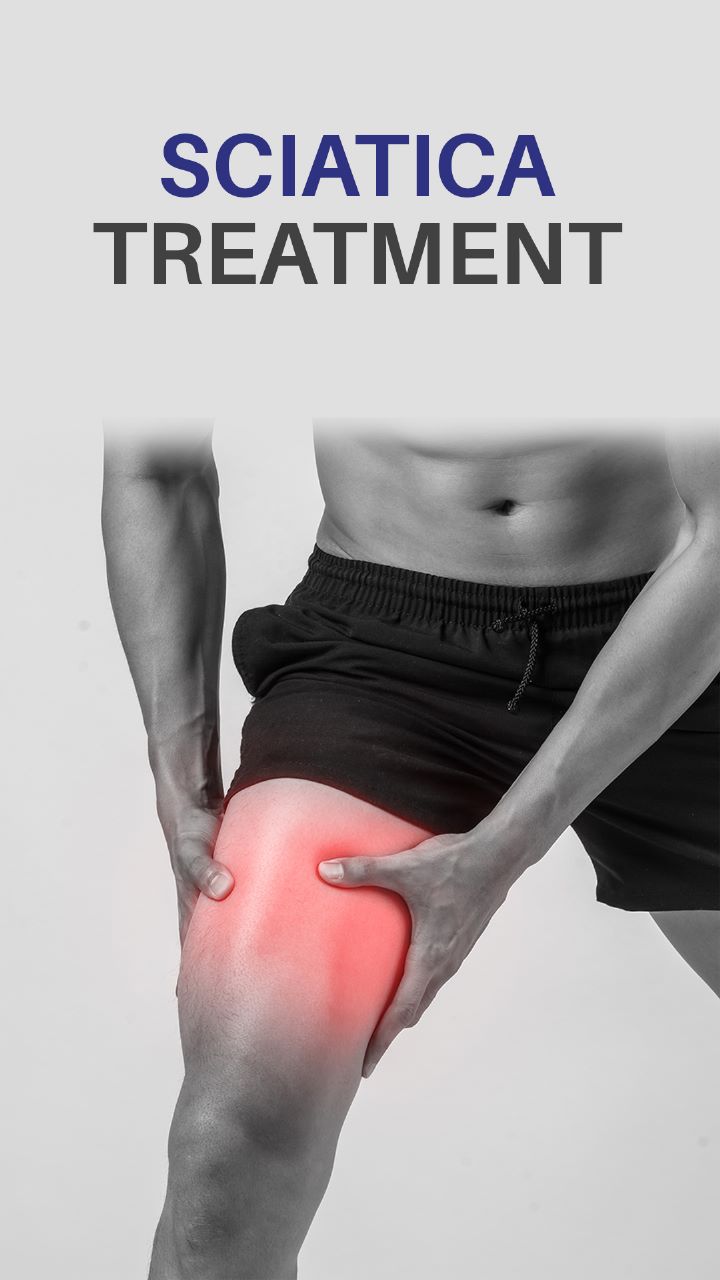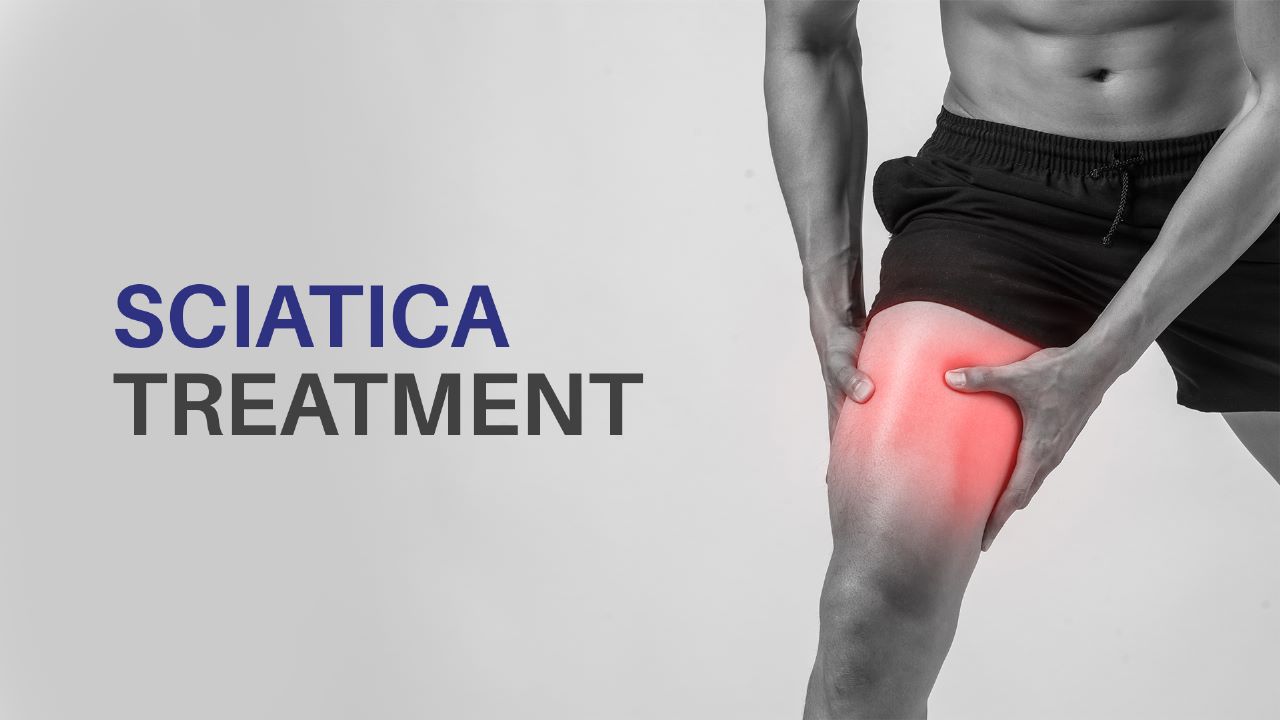

Treatments for Sciatica Pain Relief at We Are Spine
Sciatica is a painful condition that affects the lower back and legs, caused by the compression or irritation of the sciatic nerve. The sciatic nerve is the largest nerve in the body and runs from the lower back down to the legs. When this nerve is compressed, it can cause pain, numbness, tingling, and weakness in the legs. Fortunately, there are several treatments available for sciatica pain relief.
Sciatica Treatment
1.Physical Therapy
Physical therapy is one of the most common treatments for sciatica pain relief. It involves exercises and stretches that help to improve flexibility, strength, and range of motion. A physical therapist can create a customized exercise program that addresses the specific needs of the patient.
2.Chiropractic Care
Chiropractic care is a non-invasive treatment that focuses on the alignment of the spine. A chiropractor can perform spinal adjustments to relieve pressure on the sciatic nerve and reduce inflammation.
3.Medications
There are several medications that can help to relieve sciatica pain, including nonsteroidal anti-inflammatory drugs (NSAIDs), muscle relaxants, and corticosteroids. These medications can help to reduce inflammation, relieve pain, and improve mobility.
4.Surgery
In rare cases, surgery may be necessary to treat sciatica. Surgery is usually considered only after other treatments have failed to provide relief. The most common surgical procedure for sciatica is a discectomy, which involves removing the herniated portion of a disc in the spine that is putting pressure on the sciatic nerve.
Sciatica Pain Treatment
1.Hot and Cold Therapy
Hot and cold therapy is a simple and effective treatment for sciatica pain relief. Applying heat or cold to the affected area can help to reduce inflammation, relieve pain, and improve mobility.
2.Massage Therapy
Massage therapy can help to relieve muscle tension and improve circulation, which can help to reduce sciatica pain. A massage therapist can use various techniques to target the affected area and provide pain relief.
3.Acupuncture
Acupuncture is a traditional Chinese medicine technique that involves inserting thin needles into specific points on the body. This can help to stimulate the body’s natural healing processes and relieve sciatica pain.
4.Yoga
Yoga is a gentle form of exercise that can help to improve flexibility, strength, and balance. Certain yoga poses can be particularly effective for relieving sciatica pain, such as the downward-facing dog pose and the pigeon pose.
Sciatica Pain Relief
1.Rest
Rest is an important part of sciatica pain relief. Taking a break from activities that aggravate the pain can help to reduce inflammation and allow the body to heal.
2.Ergonomic Adjustments
Making ergonomic adjustments to the workspace can help to reduce the risk of developing sciatica. This may include adjusting the chair and desk height, using a standing desk, and taking regular breaks to stretch.
3.Weight Management
Maintaining a healthy weight can help to reduce the pressure on the spine and alleviate sciatica pain. Eating a healthy diet and exercising regularly can help to achieve and maintain a healthy weight.
4.Stress Management
Stress can exacerbate sciatica pain. Learning stress management techniques such as meditation, deep breathing, and yoga can help to reduce stress levels and improve overall well-being.
Sciatica Pain Cure
While there is no definitive cure for sciatica, there are several treatments that can provide sciatica pain relief. In many cases, a combination of treatments may be necessary to achieve the best results. It is important to consult with a qualified healthcare professional to determine the most appropriate treatment plan.
Sciatica How to Relieve Pain
The following steps can help to relieve sciatica pain
- Rest
- Apply heat or cold therapy
- Perform gentle stretches and exercises
- Take over
We Are Spine is a specialized spine clinic that provides treatment for various types of spine diseases, whether acute or chronic.Our team of well-known Spine Specialists in Mumbai with years of expertise in clinical practice has helped over 60000 patients overcome back pain. The clinic boasts of a highly experienced team of spine specialists and Best Spine Surgeon Mumbai who are supervised by Dr. Shekhar Bhojraj, one of the top spine surgeons in Mumbai.
Introducing the team of our spine surgeons – Dr. Abhay Nene, Dr. Shital Mohite, Dr. Priyank Patel, Dr. Raghuprasad Varma, and Dr. Premik Nagad!
We Are Spine utilizes the latest technologies and equipment to minimize spine surgery and achieve better results. With their expertise and dedication, the clinic is committed to providing the best possible care for patients suffering from spine-related ailments.
Frequently Asked Questions
Sciatica is a condition that causes pain in the lower back and legs. It occurs when the sciatic nerve, which runs from the lower back down to the legs, becomes compressed or irritated.
The symptoms of sciatica include pain, numbness, tingling, and weakness in the legs. The pain can range from mild to severe and may be constant or intermittent.
The most common cause of sciatica is a herniated disc in the spine that puts pressure on the sciatic nerve. Other causes include spinal stenosis, degenerative disc disease, and spondylolisthesis.
Sciatica is typically diagnosed based on a physical examination and a review of the patient’s medical history. Imaging tests such as X-rays, MRI, and CT scans may also be used to confirm the diagnosis.
The treatments for sciatica include physical therapy, chiropractic care, medications, and surgery. Hot and cold therapy, massage therapy, acupuncture, yoga, rest, ergonomic adjustments, weight management, and stress management can also help to relieve sciatica pain.
Surgery is usually considered only after other treatments have failed to provide relief. In rare cases, surgery may be necessary to treat sciatica.
Maintaining good posture, using proper lifting techniques, exercising regularly, and maintaining a healthy weight can help to prevent sciatica. Ergonomic adjustments to the workspace and stress management techniques can also help to reduce the risk of developing sciatica.
It is important to see a doctor if sciatica pain is severe or lasts longer than a few weeks, if there is weakness or numbness in the legs, or if there is difficulty controlling the bladder or bowels.